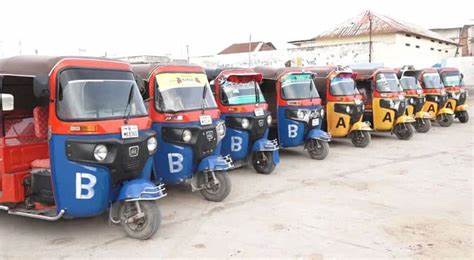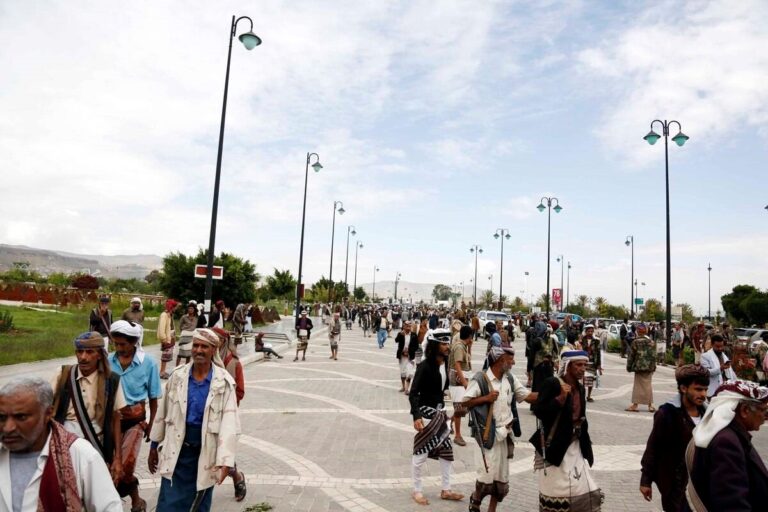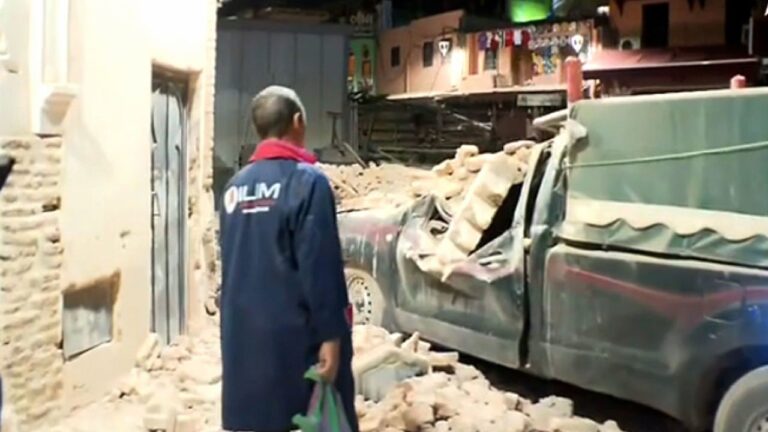A Closer Look at Bajaj Drivers in Mogadishu-Somalia
Author: Dr. Shafie Sharif Mohamed
Somali Researchers Association (SRA)
Abstract
Bajaj is the most popular transportation in Mogadishu, it operates like a taxi. After the Bajaj
second popular transportation exist the capital is minibus known (Homey) however, the scope of this study only considers data collected from the Bajaj drivers. Bajaj started operating in Mogadishu after 2010. Since after the number of Bajaj was increasing. Currently, it is estimated that nearly 35 thousand
Bajaj’s operate in Mogadishu-Somalia. Bajaj drivers nearly 100% are male. The survey comes as community and commentators debate the behavior and/or characteristics of Bajaj drivers on a daily basis. the objective was to known the behavior and the profile of the Bajaj drivers. The survey conducted from 25 Sept – 5 Nov Target respondents were 400 Bajaj drivers randomly selected. With the support of SRA enumerators, close-ended questionnaires were distributed among targeted respondents.
Introduction Different public transportations use in the country, however, if you are in Mogadishu Bajaj is your first choice of transportation because it is easy to get and faster than other transportation means. After 2010, Bajaj was operating like a taxi and becomes is one of the most popular transportation in the country. It is estimated around 35 thousand Bajaj work in the capital city. During the study, we collected data from 400 randomly selected Bajaj drivers in Mogadishu-Somalia from 25 Sept – 5 Nov 2020. following are among the major findings of the study: – In Somalia, most of the population are youth and it is estimated seven-in-ten (70%). Youth are routinely affected by unemployment and financial challenges. According to the survey six-in-ten (60 %) of Bajaj drivers are aged between 20-25. Followed by a quarter (25%) aged between 26-30. only fewer Bajaj drivers age between 31-35, 36-40 (9%, 6%) respectively.
One potential reason could observe why youth favor driving Bajaj is because unemployment is
higher among the youth and secondly availability of Bajaj either for rent, a loan from the bank paying monthly installment or personal investment, 1.1 diagram shows age groups for the Bajaj drivers in Mogadishu-Somalia.
Bajaj transportation has spread rapidly around the country. Today Bajaj business represents a significant share of the market, economy, and employment. It is the largest business among the youth. The vast majority of Bajaj owners and drivers are male than female. Across 400 drivers surveyed were asked if they are the owner of the Bajaj or it’s for rent? Drivers are more likely to be the owners. Ownership rates are closer to six-in-ten (65%) have confirmed that they are the owners. While about one-third (35%) of drivers mentioned it’s for rent. Diagram 1.2 states Bajaj ownership.
Years of Driving: Although last ten years Bajaj was operating in Mogadishu, according to surveyed, 66% drivers have been driving Bajaj for 0-3 years, while 29% have mentioned that they have been driving 4-6 years only 5% stated 7-9 years of driving experience. According to Somali Researchers Association (SRA) survey, seven-in-ten (70%) of the drivers don’t have a driving license. Diagram 1.3 is about driving experience.
Working Hours: Standard working hours are about 8 hours. However, the Somali Researchers Association (SRA) found that the majority of Bajaj drivers work more than ten hours a day, about seven-in-ten (74%) stated that they work 10-12 hours a day, 14% stated that they operate 13-15 hours a day, and only smaller share (12%) operates standard working hours (8). When asked about some specific challenges they face at working hours, the majority say balancing working hours and family time. A large majority of the drivers say it would be best for them to be working standard hours up to 8 hours but their financial needs compelled them to work more than ten
Hours and family income is the first priority to them. Diagram 1.4 states the working hours of Bajaj drivers.
Drug addiction: There is no statistical data from the federal government that provides drug addiction in the country. Countries may have a different definition of drugs, what consider a drug in a country may consider another country acceptable. For instance, Khad consumption Somali is not considered drugs compare to Europe and America. During data collection, drivers were asked if they use or addict one of these Khad, Taboo, smoke, or none of these? The study found that a large majority of the drivers 73% don’t have an addiction to one of the above-stated substances however, about three-in-ten (27%) stated that they are addicted to either Khad, Taboo, or smoker. Diagram 1.5 states substance addiction.
Level of Education: Somali education becomes private after 1991, families generally support their children by paying the tuition fee. Education drop out have contributed to raising youth joining the labor market. Bajaj drivers have a different educational profile. According to study findings, 33% of the drivers have primary education while those with secondary education are about 32% yet there are university graduates 22% of the drivers who stated that they have a bachelor’s degree. There are also drivers who are young and less educated, about 13% have no formal education at all. High dropout and low enrolment rates reported in schools in Mogadishu. Diagram 1.6 states the educational level of the drivers.
Marital status: There are several types of marital status: single, married, widowed, divorced, and separated. Survey drivers were asked their marital status, a large majority surveyed about six-in-ten (60%) responded that they are married, 32% of drivers have stated that they are single and only 8% stated that they are divorced. The study also investigated whether Bajaj drivers have children. 15% of those who answered married stated that they don’t have children. While married once, 36% have stated that they have 1-3 children. 12% have stated that they have more than 3 children. While, 5% of the respondent chooses not to answer this question. Diagram 1.7 states the marital status of the drivers.
Income (Revenue): Year after year the number of Bajajs operate in Mogadishu was increasing. Drivers suffer income challenges due to the huge number of Bajajs operate in the city, this exceeds COVID-19 movement restriction and street blocks in the city. Overall, 60% of drivers said that average income in a day is about 15-20 USD. 27% have stated their average income is about 20-25 USD while narrow majority of the drivers 13% mentioned that they receive 26-30 USD. Those who were driving three years ago stated that the average income a day was $30-40. Concerns related to the COVID-19 and the roadblocks have affected their daily sales/income. Some drivers worried about how could they be able to feed their family if the situation goes like this. Diagram 1.8 stated drivers’ daily income.
Day off: Friday is a public holiday in Somalia. Most of the drivers have indicated that they don’t work Fridays about six-in-ten (63%). However, slightly higher one third 37% stated that they work seven days a week. The study found that most drivers who work seven days a week are those driving rent Bajajs, Friday is an opportunity cost for them, they are not required to pay rental fees to the owner rather they should only change motor oil and the balance they work on that day belongs to them. Generally, people who say they own the Bajaj are more likely to have a day off. Diagram 1.9 states drivers take a day off for the work.
Dating Relationship: Large majority of the drivers admitted that they have a dating relationship with female passengers. Among those who say they have a dating relationship are 68%. Electronic money facilitates contacting the passenger easily. Only 32% have indicated that they don’t have a dating relationship with their passengers because they are too busy with work and not interested in dating because they have a wife. Drivers who are not married are the most likely to say they have a dating relationship with female passengers. Diagram 2 states dating relationship with passengers.
Job satisfaction: People say getting a job in this country is very difficult. Youth have experienced the highest unemployment rate which estimated at 80% among youth. Therefore, most drivers feel satisfaction in their job. About seven-in-ten (74%) have indicated that they are satisfied with their carrier as Bajaj driver. Only 26% stated that they are not satisfied. Yet, drivers’ satisfaction with their jobs does not necessarily translate into hopes for their future. Some say “We don’t have an alternative job; thus we should satisfy what we have” this is one of the most common issues cited by drivers. Many drivers think jobs in the private sectors are less secure, more pressured, less rewarding in terms of benefits, and less built on worker loyalty to employers. Diagram 2.1 states drivers’ job satisfaction.
Parents’ life: Somali parents are influential to their children’s employment carriers. Bajaj drivers were asked if their parents are both life, died or one of them is life. We found that about 54% of both parents are alive, while one-third 33% said one is alive only 13% have indicated both of their parents passed away. Diagram 2.2 indicates the parents’ life.
Bank Loan or Personal investment: Even though there are many banks advertise their business “investors”, the survey found only 19% drivers were those received a loan from the bank and bought the Bajaj. Drivers believe borrowing bank money are difficult and it is not easy to meet their criteria. Bank loan views remain negative among Bajaj drivers, nearly eight-in-ten (81%) stated that the Bajaj is a personal investment or borrowed from family or friends rather than a bank. Diagram 2.3 states Bajaj investment.
Meal for working Hours: The study investigates how often Bajaj drivers eat meals at restaurants during working hours. More generally, about six-in-ten (67%) said they eat meals at restaurants during the working hours although they have transportation and able to go back home, they still prefer eating outside. Some said “going back home for a meal is a waste of time” others said, “you feel sleepy if you back home in the middle of the day”. The survey found that about one-third (33%) stated that they don’t eat meals at a restaurant because they have a family. Diagram 2.4 states where drivers eat meal during working hours.
About SRA: Somali Researchers Association (SRA) is an association that brings together Somali researchers and provides a platform to exchange knowledge, experience, and ideas. SRA was founded in 2017, it’s a professional association whose mission is to promote excellent research in Somalia. Our research creates awareness about the public problems in people’s life provide actionable intelligence to civic leaders and policymakers, reorients the focus towards the solutions, and paves the way for real change in a way that buildings momentum for a better tomorrow for all.
Author Contact: somresearchers@gmail.com
Tell: +252615513988









